Vassar College (Maria Mitchell) Observatory
Introduction
Text-to-speech Audio
Built in 1865, the Vassar College Observatory, also called the Maria Mitchell Observatory, was the first building on the college’s campus and where Maria Mitchell, one of the first female astronomers in the United States, taught astronomy from 1865-1888. Mitchell was a pioneer in her field, becoming the first American to record a sighting of a comet, which was named after her, and the first woman to be admitted into the American Academy of Arts and Sciences. Designed by Charles S. Farrar, the observatory included living quarters for Mitchell and her father. The building was added to the National Register of Historic Places in 1991.
Images
The Vassar College Observatory in the late 1800s.
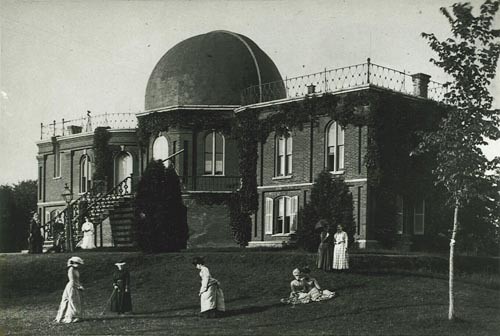
Maria Mitchell seen with her students outside of the Vassar College Observatory. Ca. 1878
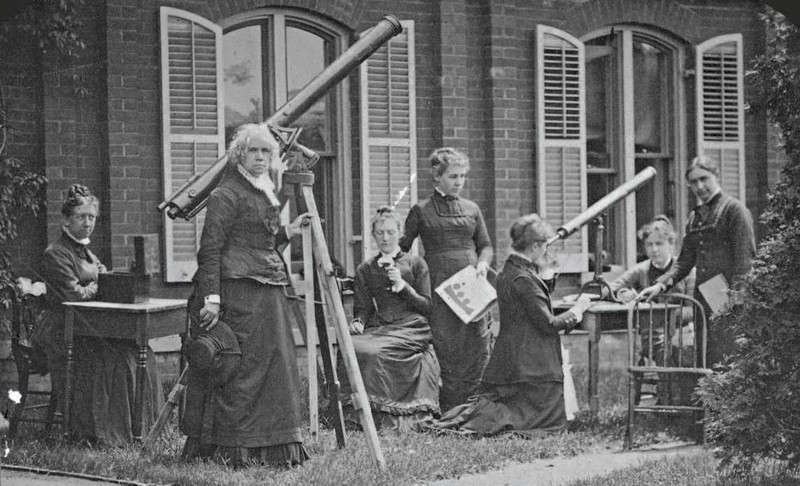
The interior of the Vassar College Observatory, ca. 1868.
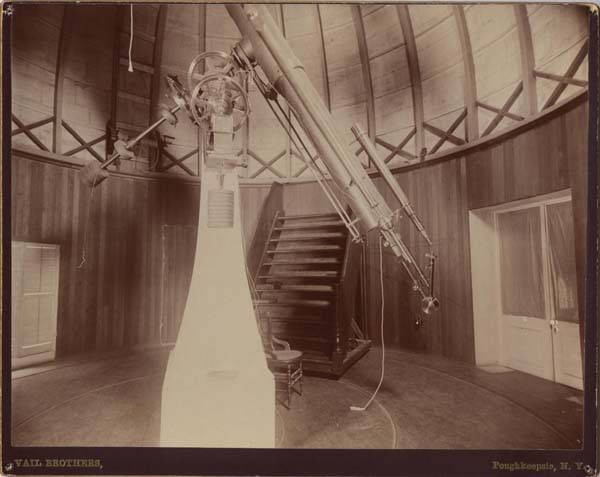
The Observatory now houses offices and classrooms for the Education Department.
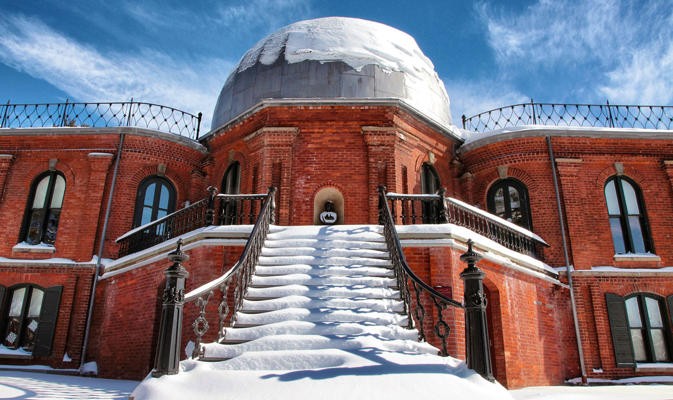
The Vassar College Observatory shortly after its construction.
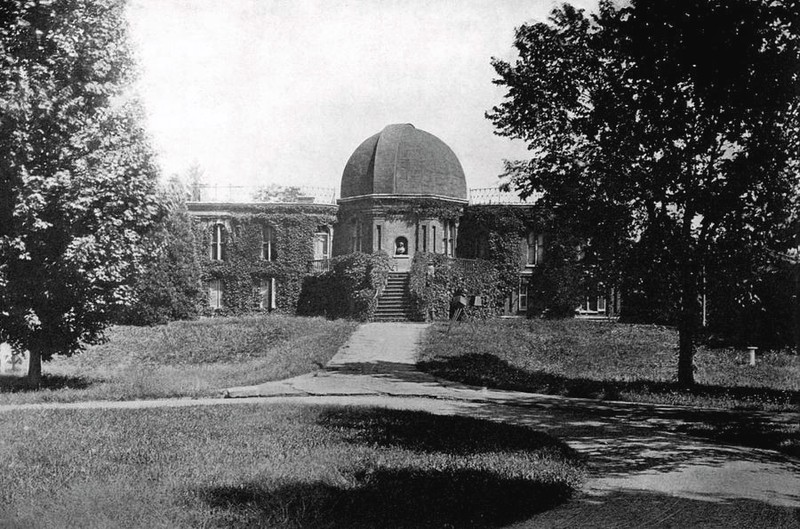
Backstory and Context
Text-to-speech Audio
The Maria Mitchell Observatory, also known as the Vassar College Observatory, was named after its first inhabitant, Maria Mitchell (1818-1889). In addition to being the first female astronomer in the United States, Mitchell was known for being a proponent for science and math education for girls and the first American to discover a comet. Influenced by her father, an astronomer and teacher, Mitchell’s love for the subject was fostered early on, and at the age of twenty-nine, while using a two-inch telescope, Mitchell discovered the comet that would come to be known as “Miss Mitchell’s Comet.” After her landmark discovery, King Frederick VI of Denmark awarded her with a medal, and she swiftly became the first woman elected to the American Academy of Arts and Sciences.
Shortly after the Civil War ended, the founder of the newly formed Vassar College, Matthew Vassar, asked Mitchell to join their faculty as head of the Astronomy Department. She agreed to accept the position, so long as the new observatory held living quarters for her and her father. Charles S. Farrar, who himself would become a professor at Vassar, was asked to design the facilities and residences and William Harloe served as builder. The building resembled Vassar’s Main Building, which was completed shortly after the observatory was, being brick with stone, having arched first floor windows, and a central entrance located on the second story.
The dome, covered with sheet-tin, was constructed with ribs of pine that rested on a plate of pine. Although Mitchell and her father at first found themselves uncomfortable living the building, subsequent changes made it more domestic. Of the original nine faculty members, Mitchell was the only one to not reside in the Main Building. The observatory’s telescope, coming it at more than twelve inches in diameter, was built by a famed New York telescope-maker named Henry Fitz, and Matthew Vassar personally worked to acquire one of the best telescopes for Mitchell.
As head of the department and with a premier telescope, then considered the third largest in the nation, Mitchell soon shifted her focus to studying the surfaces of Saturn and Jupiter. In addition to heading to the Astronomy Department, Mitchell remained active in the women’s suffrage and civil rights movements. A founder of the American Association for the Advancement of Women, Mitchell defied societal norms by having her female students come out at night for observations and even inviting feminists to speak to students on political topics.
Mitchell retired from Vassar in 1888 and spent the last year of her life conducting research in Massachusetts. In 1905, she became one of three women to be elected to the prestigious Hall of Fame of Great Americans and later the National Women’s Hall of Fame located in Seneca Falls. A lunar crater was also named by astronomers in Mitchell’s honor. The Vassar College Observatory served its original purpose for over a century. In 1991, the building became the second on the campus to be named a National Historic Landmark, the Main Building was the first. Six years later, the Class of 1951 Observatory was built, where Vassar’s observatory courses continue to be held. The original Vassar College Observatory now serves as classrooms and offices for the Education Department.
Sources
Maria Mitchell Observatory, Vassar Encyclopedia. Accessed April 12th, 2023. https://vcencyclopedia.vassar.edu/buildings-grounds-technology/buildings/observatory/.
Michals, Debra. Biography: Maria Mitchell, January 1st, 2015. Accessed April 12th, 2023. https://www.womenshistory.org/education-resources/biographies/maria-mitchell.
Maria Mitchell and Women’s Rights, Vassar Encyclopedia. Accessed April 13th, 2023. https://vcencyclopedia.vassar.edu/faculty/original-faculty/maria-mitchell/maria-mitchell-and-womens-rights/.
Vassar Encyclopedia
Vassar
New York Heritage Digital Collections
The Miscellany News
Fine Art America
